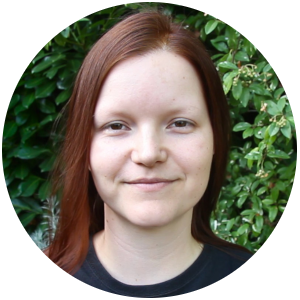Sometimes my students struggle a bit with rounding when given a certain amount of significant figures. So let's have a look how does it work - especially some tricky bits with zeros all around.
A brief theory about significant figures - it means we talk about non-zero digits. If I look at the number, the first non-zero from the left side is my first significant figure. Then depending on how many significant figures I want to have, that's how many digits I'll be working with. Just be careful and don't loose any important zeros at the end (1902 rounded to three significant figures is 1900, because think about it this way: if you would say you have roughly £1900 or £190, that's way too significant difference, right? =)
We could say when talking about rounding to 1-2-3-as many as you want significant figures that we have two main groups. Numbers bigger than 1 and smaller than 1.
Numbers bigger than 1: Simply the first number is "our" number. Take as many as needed and round correctly the last one. Be careful about zeros behind.
Example: 45,963 - three significant figures - 45,963 - 459 with 6 behind, the last one will go up, therefore it would be 460, mind the zeros: 46,000
Tricky one: 678 - four significant figures - 678.0 (if more significant figures needed, just add more zeros behind the decimal point)
Numbers smaller than 1: The first non-zero number is what are we looking for and then again the rest as required. Be careful about zeros at the beginning (and behind as well).
Example: 0.45963 - four significant figures - 0.45963 - with 3 behind, the last one will stay, therefore it's 0.4596
Tricky one: 0.0006010045 - five significant figures - 0.0006010045 - behind the last one (yes, it's the last zero) is 4, therefore the last digit stays and it's 0.00060100
Not good enough? Few more examples, then you'll become experts in rounding numbers to any amount of significant figures...
One significant figure:
469,304 -> 469,304 -> 500,000
469,304.7089 -> 469,304.7089 -> 500,000
1.09 -> 1.09 -> 1
1.9 -> 1.9 -> 2
0.00506798 -> 0.00506798 -> 0.005
0.004801 -> 0.004801 -> 0.005
0.1 -> 0.1 -> 0.1
0.0001 -> 0.0001 -> 0.0001 (these last two might look confusing, so don't forget we need to find the first non-zero, that's why both last numbers are still rounded to one significant figure only)
Two significant figures:
6982 -> 6982 -> 7000
6.982 -> 6.982 -> 7.0
0.1 -> 0.1 -> 0.10 (yes, we really need to add one more zero to have one more figure behind the first one)
Three significant figures:
9708 -> 9708 -> 9710
0.9708 -> 0.9708 -> 0.971
Four significant figures:
1000.09585 -> 1000.09585 -> 1000
100.09585 -> 100.09585 -> 100.1
10.09585 -> 10.09585 -> 10.10
1.09585 -> 1.09585 -> 1.096
0.19585 -> 0.19585 -> 0.1959
Five significant figures:
101.109 -> 101.109 -> 101.11
10.1109 -> 10.1109 -> 10.111
1.01109 -> 1.01109 -> 1.0111
0.101109 -> 0.101109 -> 0.10111
At the end, maybe it's worth to note that rounding to decimal places is different than rounding to significant figures. Decimal places count on the right side of the decimal point only, significant figures can freely cross decimal point from left to right side - depending on the first one, so 1.23456 rounded to 2 significant figures is 1.2, but rounded to two decimal places is 1.23.
So - have you mastered it already?



